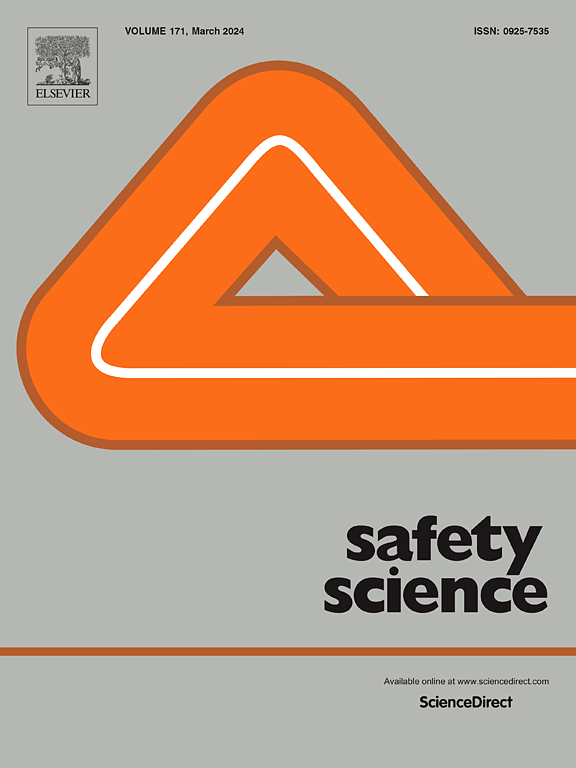Unveiling the speeding behavior: Assessing the speeding risks and driver injury severities in single-heavy truck crashes
IF 4.7
1区 工程技术
Q1 ENGINEERING, INDUSTRIAL
引用次数: 0
Abstract
Long-haul heavy trucks are vital to the national economy. Yet, they have been involved in an increasing number of severe crashes, particularly due to speeding, which increases crash risks and injury severity. This issue is notably severe in Pennsylvania, where large truck-involved fatalities in speeding-related crashes are on the rise.
This study aims to uncover the speeding behavior and its associated risks in heavy trucks by analyzing single-heavy truck speeding-related crashes over six years (2018–2023, inclusive), keeping non-speeding-related crashes as a reference.
Utilizing a mixed logit model with heterogeneity in means and variances, the study identified twenty-seven statistically significant variables in both scenarios, with five variables common to both models. The estimated model results unveiled risk factors encompassing spatial, temporal, environmental, vehicular, crash, roadway, and driver characteristics. The common factors include overturning crashes, negotiating curved segments, middle-aged drivers (30–49 years old), unbelted truck drivers, and road segments with a 70 mi/hr speed limit. Speeding-related single-heavy truck crashes are much more likely to result in severe or minor injuries than non-speeding crashes, highlighting the amplified risks of excessive speed.
The findings highlight the urgent need for comprehensive countermeasures to reduce speeding-related crashes. To mitigate these risks, the study highlights the importance of comprehensive countermeasures with the strategies of installing roadside barriers for heavy trucks, implementing chevron signs with flashing lights along curved segments, regular roadside inspection, and vehicle maintenance policy, re-emphasizing the speed limiter policy, and providing targeted training for truck drivers to foster safer driving behaviors. These strategies, aligned with the National Road Safety Strategy, have the potential to significantly enhance safety for heavy trucks and the broader driving community.
揭示超速行为:单重卡车碰撞中超速风险与驾驶员伤害严重程度评估
长途重型卡车对国民经济至关重要。然而,他们已经卷入了越来越多的严重撞车事故,特别是由于超速,这增加了撞车风险和伤害的严重性。这个问题在宾夕法尼亚州尤为严重,在那里,与超速相关的大型卡车事故造成的死亡人数正在上升。本研究旨在通过分析6年(2018-2023年,含)单辆重型卡车与超速相关的碰撞,并以非超速相关的碰撞为参考,揭示重型卡车的超速行为及其相关风险。利用均值和方差异质性的混合logit模型,研究确定了两种情况下的27个统计显著变量,其中5个变量为两种模型共有。估计的模型结果揭示了包括空间、时间、环境、车辆、碰撞、道路和驾驶员特征在内的风险因素。常见的因素包括翻车事故、转弯路段、中年司机(30-49岁)、未系安全带的卡车司机以及限速为70英里/小时的路段。与非超速碰撞相比,与超速相关的单辆重型卡车碰撞更有可能导致严重或轻微的伤害,这凸显了超速的放大风险。研究结果强调,迫切需要采取全面的对策来减少与超速有关的撞车事故。为了降低这些风险,该研究强调了综合对策的重要性,包括为重型卡车安装路边护栏,在弯曲路段安装带有闪烁灯的v形标志,定期进行路边检查,制定车辆维护政策,重新强调限速器政策,并为卡车司机提供有针对性的培训,以培养更安全的驾驶行为。这些战略与国家道路安全战略相一致,有可能大大提高重型卡车和更广泛驾驶群体的安全性。
本文章由计算机程序翻译,如有差异,请以英文原文为准。
求助全文
约1分钟内获得全文
求助全文
来源期刊

Safety Science
管理科学-工程:工业
CiteScore
13.00
自引率
9.80%
发文量
335
审稿时长
53 days
期刊介绍:
Safety Science is multidisciplinary. Its contributors and its audience range from social scientists to engineers. The journal covers the physics and engineering of safety; its social, policy and organizational aspects; the assessment, management and communication of risks; the effectiveness of control and management techniques for safety; standardization, legislation, inspection, insurance, costing aspects, human behavior and safety and the like. Papers addressing the interfaces between technology, people and organizations are especially welcome.
 求助内容:
求助内容: 应助结果提醒方式:
应助结果提醒方式:


